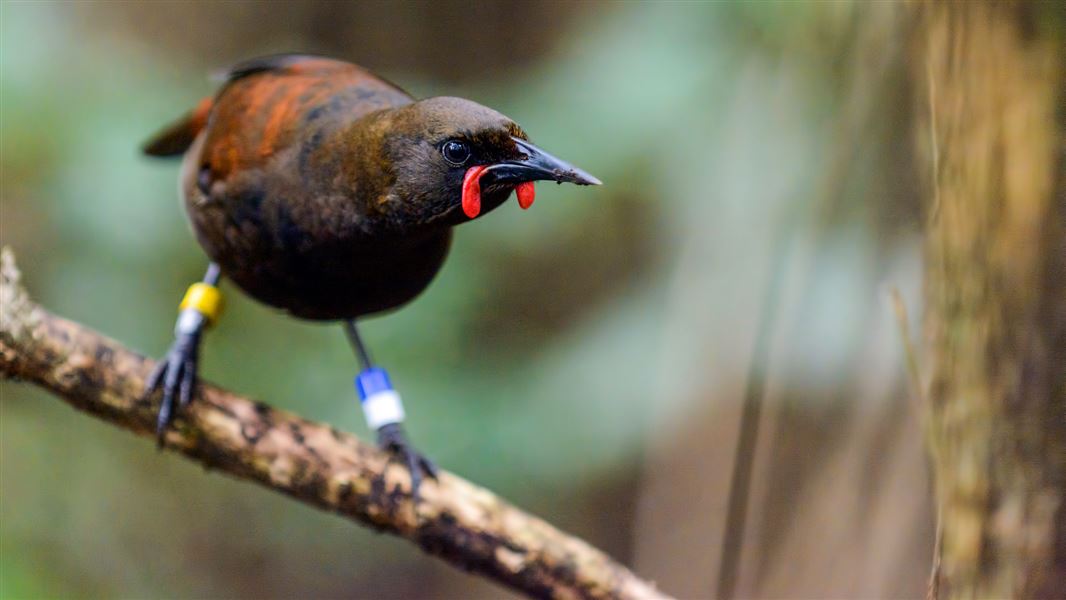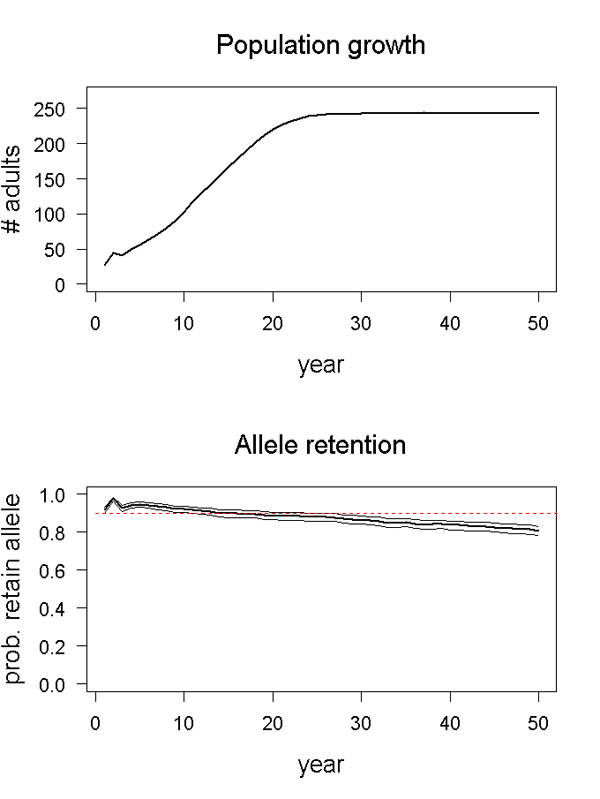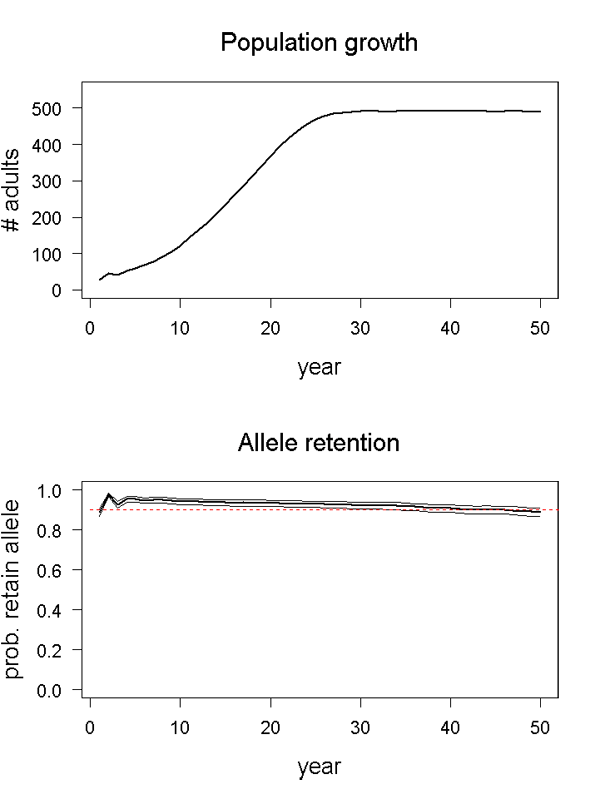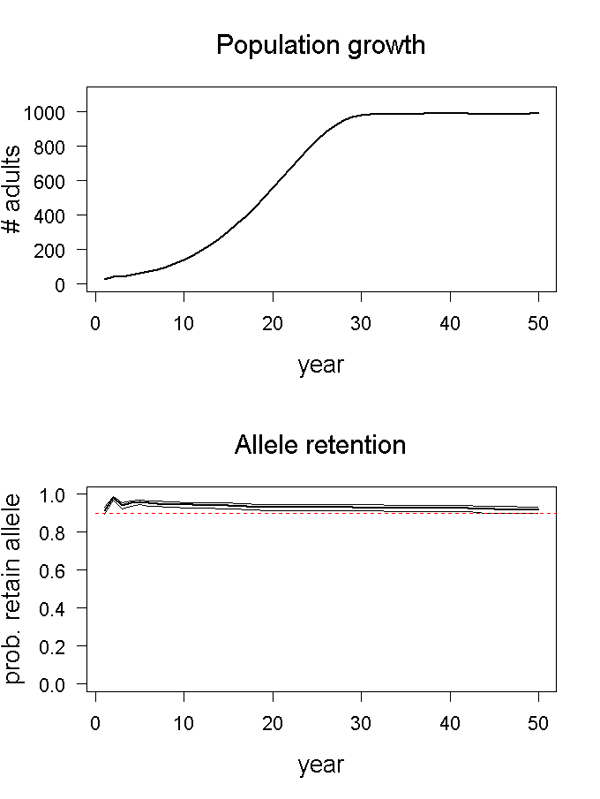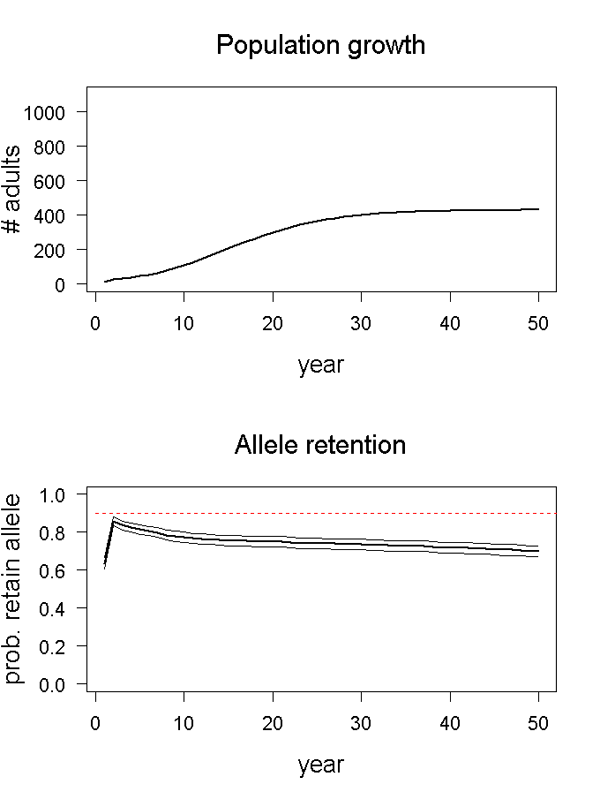First determine your habitat connectivity, habitat size and predator control levels of the translocation site; then view the predicted success of translocations for different scenarios.
Points to note if you are translocating this species
South Island saddlebacks are extremely vulnerable to all predators – even more so than North Island saddlebacks. Therefore, all mammalian predators must be eradicated from your release site. The impact of mice on South Island saddlebacks is currently unclear.
South Island saddlebacks require coastal and inland forests, particularly scrubby regenerating areas.
Saddlebacks roost and nest in cavities, and can use artificial roosts and nest boxes.
All South Island saddleback populations have been bottlenecked. Therefore, it might be beneficial to select birds from multiple source sites, although this is probably less important than for North Island saddlebacks as all South Island saddlebacks have descended from c. 36 birds.
There has been high success with island translocations of South Island saddlebacks. However, the single translocation to a fenced mainland site (Orokonui Ecosanctuary, Dunedin) failed following a stoat incursion – although other unknown factors may have been acting on the population before the incursion.
Much of the data used in this section have been extrapolated from North Island saddleback data. However, some South Island saddleback data suggest that subadults tend to have higher survival 12 months after translocation than adults, which could be worth considering when you are selecting individuals for translocation. Further monitoring is needed to collect more data.
Factors of success for South Island saddleback
Founder number for maximising genetic diversity
40 – consider multiple source locations
Habitat connectivity
Low (isolated)
Dispersal is likely to be low where there is low connectivity. Dispersal abilities are not currently known but are likely similar to North Island saddleback, i.e. unlikely to disperse across open areas or water > 250 m
Medium
Unknown but likely similar to North Island saddleback, i.e. low levels of dispersal will occur over habitat gaps < 250 m but your population will most likely still establish.
High (adjoining)
Unknown but experts suspect that dispersal will be high in adjoining habitats if there are no large areas of unsuitable habitat to cross. Therefore, in such habitats, a large proportion of translocated South Island saddlebacks may move away and be lost from the population.
Habitat size
Small (minimum area)
South Island saddlebacks have established on very small islands (e.g. Betsy Island, 6 ha). However, the resultant populations are very small (< 20 birds) and will be highly inbred and unstable over time. Therefore, we recommend sites of > 50 ha as a bare minimum.
Medium
> 100 ha
Large
≥ 200 ha
Minimum predator control
If you are translocating South Island saddlebacks, all mammalian predators will need to have been eradicated from the release site.
Predators maintained at low density
South Island saddlebacks are even more vulnerable to mammalian predators than North Island saddlebacks. Consequently, all predators must be eradicated from the release site. These birds can possibly co-exist with mice but not kiore.
Predators eradicated
Sites require the total eradication of all target predators, possibly including mice, or the maintenance of zero density year-round. The management of predators to zero density has not been attempted for South Island saddlebacks.
Predicted success for scenarios
South Island saddleback: Scenario 1
Scenario: Low habitat connectivity, small habitat size, predators eradicated.
Data source: This projection used mean annual juvenile survival and initial survival data from Ulva Island, and annual survival data from North Island saddleback (due to a lack of South Island saddleback data).
Conditions: 50 birds were translocated in year one followed by a further 50 in year two; the carrying capacity of the site was 250 saddlebacks; there was no migration.
Outcome: Despite the slow growth rate, a viable population will likely establish and c. 80% of genetic diversity will be maintained over ten generations. You could improve this result by choosing a larger site (see Scenarios 2 and 3).
South Island saddleback: Scenario 2
Scenario: Low habitat connectivity, medium habitat size, predators eradicated.
Data source: This projection used mean annual juvenile survival and initial survival data from Ulva Island, and annual survival data from North Island saddleback (due to a lack of South Island saddleback data).
Conditions: 50 birds were translocated in year one followed by a further 50 in year two; the carrying capacity of the site was 500 saddlebacks; there was no migration.
Outcome: Despite the slow growth rate, a viable population will likely establish and 90% of genetic diversity will be maintained over ten generations.
South Island saddleback: Scenario 3
Scenario: Low habitat connectivity, large habitat size, predators eradicated.
Data source: This projection used mean annual juvenile survival and initial survival data from Ulva Island, and annual survival data from North Island saddleback (due to a lack of South Island saddleback data).
Conditions: 50 birds were translocated in year one followed by a further 50 in year two; the carrying capacity of the site was 1000 saddlebacks; there was no migration.
Outcome: Despite the slow growth rate, a viable population will likely establish and 90% of genetic diversity will be maintained over ten generations.
South Island saddleback: Scenario 4
Scenario: High habitat connectivity, large habitat size, predators eradicated.
Data source: No data were available for this scenario so values were generated by an expert – therefore, there is no certainty in the results. This projection used mean annual juvenile survival and initial survival data from Ulva Island, and annual survival data from North Island saddleback (due to a lack of South Island saddleback data), with initial survival reduced to 0.5 and juvenile/non-breeder survival reduced to 0.5/0.1 (due to increased dispersal).
Conditions: 50 birds were translocated in year one followed by a further 50 in year two; the carrying capacity of the site was 1000 saddlebacks; there was ongoing dispersal.
Outcome: There is uncertainty about whether South Island saddlebacks will establish in highly connected sites (despite the apparent success indicated by the graphs below). For example, the establishment of birds at Orokonui Ecosanctuary, which has high connectivity, has been slow and difficult, with very low initial successes for both translocations, i.e. most birds disappeared soon after release. Under this scenario, a population may grow very slowly and not reach carrying capacity, suggesting that dispersal is an ongoing issue and could cause sudden declines. Furthermore, genetic diversity will be lost over ten generations, which could affect the long-term persistence of the population. You could improve this result by choosing a low-connectivity site (see Scenarios 1–3).
